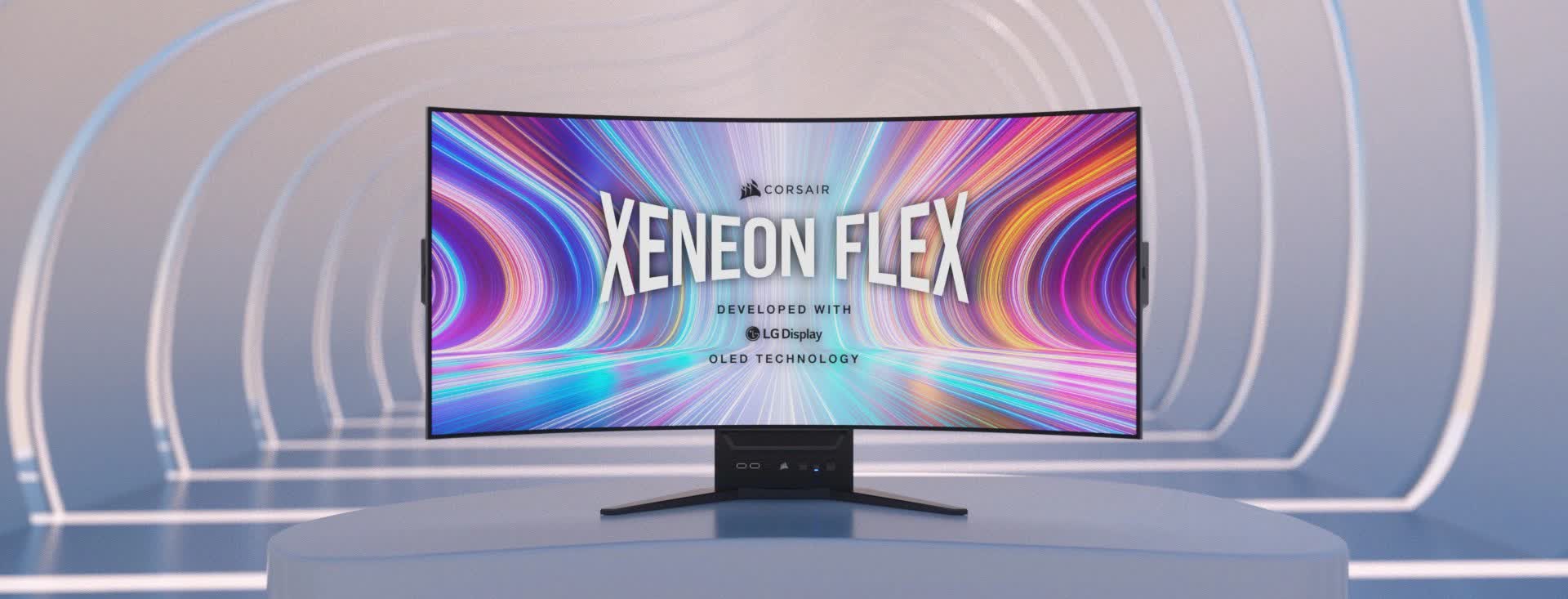What just happened? If you can't decide between buying a flat gaming monitor or one with a curve, Corsair has the answer: the Xeneon Flex, the world's first 45-inch OLED display that can be bent by hand from completely flat to an 800R curve.
Corsair's Xeneon Flex 45WQHD240 joins the ever-growing list of large-screen OLED monitors to hit the market. It sounds pretty impressive even without the headline-grabbing feature, boasting LG W-OLED tech (it was built in partnership with LG), a peak brightness of 1,000 nits, 1,350,000:1 contrast ratio, a 240Hz refresh rate, 0.03ms GtG response time, and a 0.01ms Pixel on/off time.
The monitor also has a 3,440 × 1,440 resolution with a 21:9 aspect ratio and is compatible with G-SYNC and FreeSync Premium. Corsair notes that it has an anti-reflective coating to reduce glare and reflections and LG Display's protective Low Blue Light technology to help prevent eye strain.
But the feature that makes the Xeneon stand out from the crowd is its ability to be manually bent into a different shape. The idea is that users can keep the monitor flat when, for example, watching movies or working on a spreadsheet, then bend it by hand all the way up to that 800R curve for enjoying more immersion in games.
Corsair says image retention, one of the biggest concerns with any OLED monitor, is addressed using a "sophisticated burn-in prevention system which operates when both powered on, and when switched off." So confident that this will prevent problems, the company offers a three-year Zero Burn In warranty alongside its Zero Dead Pixel Warranty.
No word yet on price or availability—they'll be revealed later this year. Given that the Alienware AW3423DW 34", a joint winner in our Best HDR Gaming Monitors feature, is around $1,300, expect Corsair's bigger, bendier display to be even more expensive.
Yesterday saw the release of two other large OLED monitors. The ASUS ROG Swift models offer 138Hz refresh rates, custom heat sinks, HDMI 2.1, and 0.1ms response times, but they don't bend, at least not intentionally.
https://www.techspot.com/news/95761-corsair-reveals-45-inch-oled-gaming-monitor-can.html

